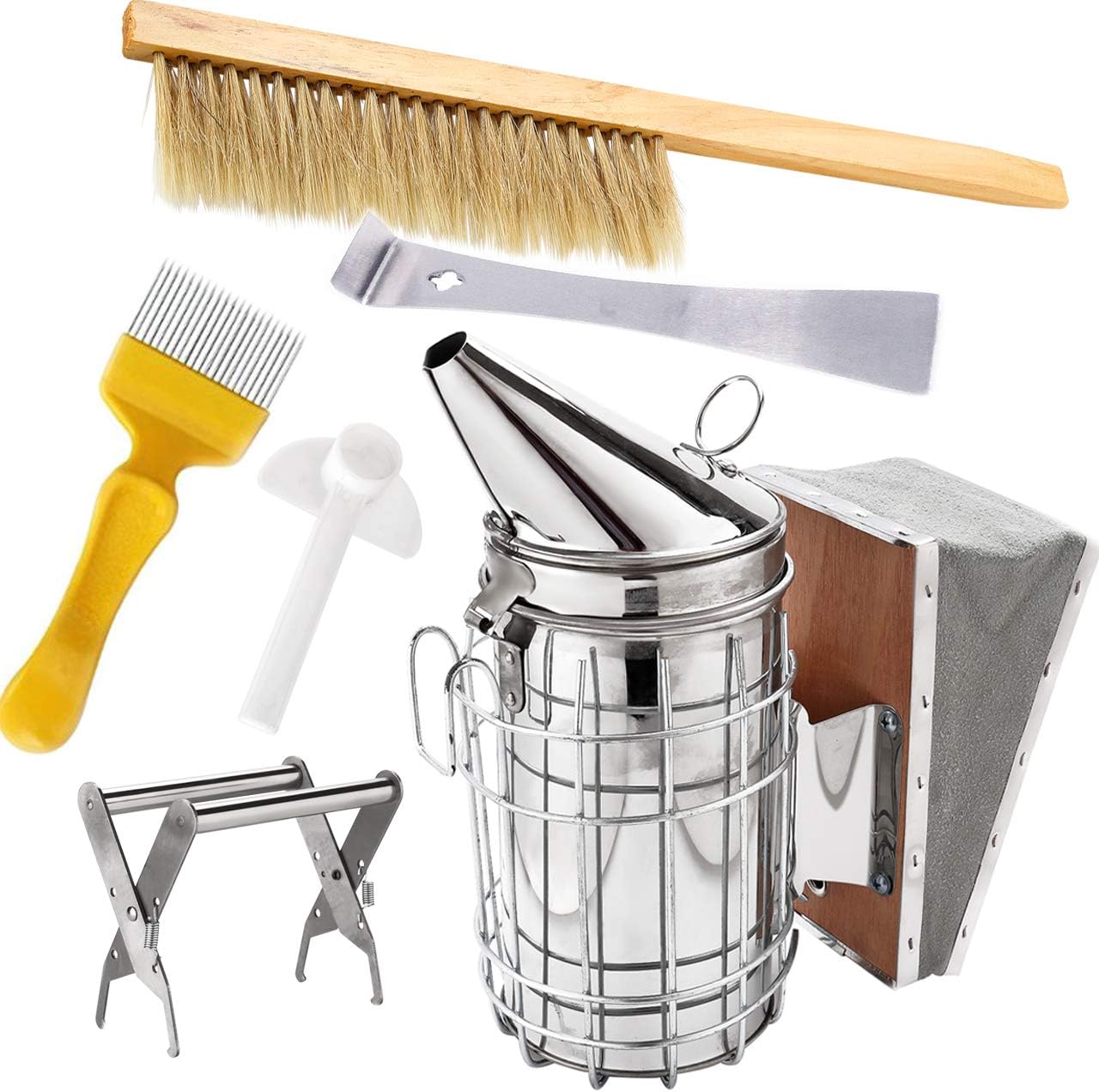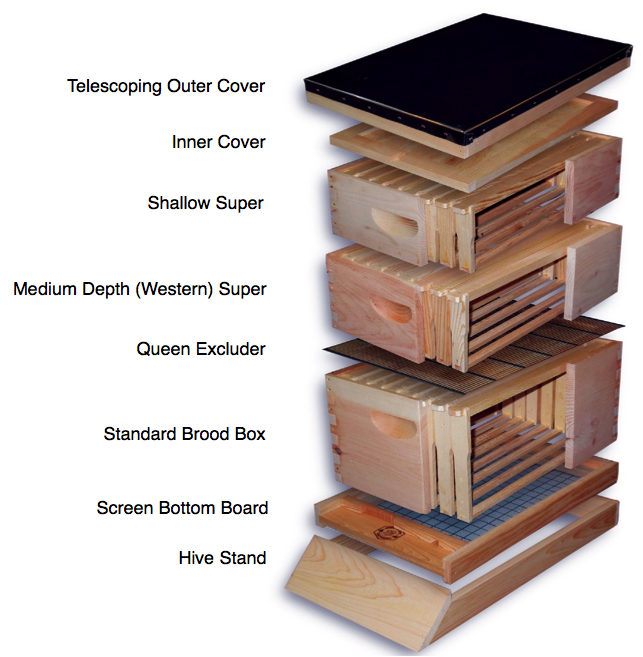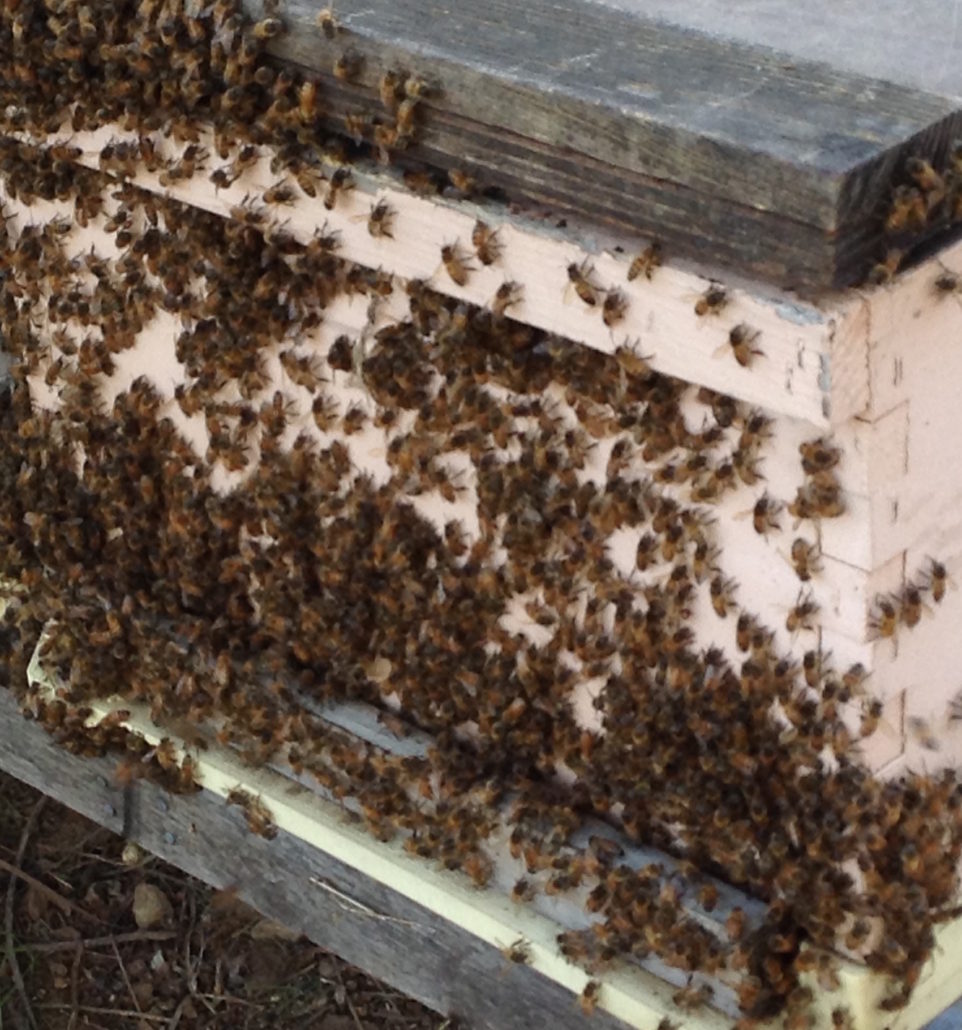Beekeeping for Beginners
Gearing Up
Protecting Yourself
The amount and type of protective clothing you use as a beekeeper is a personal choice. Some folks gear up from head to toe, while others may put on a veil... if anything at all! A good place to start is with a jacket with a built in veil, a sturdy pair
of loose jeans, and boots. Gloves are a good safety measure (stings on fingers are never fun), but they do limit your mobility.

Protecting Your Bees
Tools such as a smoker and hive tools are essential for working with a hive. Bees work hard to gather honey and protect their queen. If a hive feels like it is under attack (when you are doin maintenance or collecting honey) they release a pheramone that
alerts other bees in the area. This can stir up an entire hive into a frenzy very quickly! the smoke from your smoker will mask that pheramone and allow most of the bees to stay calm and unaware while you work.
A hive tool
is a multipurpose tool that is used to separate hive boxes, manipulate frames, and scrape off excess wax and propolis (bee glue), just to name a few uses.
 Learn More
Learn More
Types of Hives
TopBar

Top Bar hives allow bees to expand horizontally. This mimics a more natural environment for the bees, but it can also be more difficult for beekeepers to harvest honey.. There are fewer ready-made supplies available to buy, but Top Bar hives are simple
to consruct. These hives also allow for clean wax collection because there are no plastic foundations on the frames.
Langstroth

These hives are very popular with backyard beekeepers and large production farms. Bees are kept in rectangular boxes that are stacked on top of eachother to give the bees room to expand. These hives give the beekeeper excellent access to all parts of
the hive and allow for easy harvesting at the end of the season.
Learn More
Choosing Your Bees
Caucasian Bees (apis mellifera caucasica)

This large variety of honey bee is native to the mountain ranges of southeastern Europe and Asia. These bees are fuzzy and mild tempered. They build their colonies slowly over the spring and summer. They do better in warmer climates and have trouble surviving
cold and damp winters.
Carneolan Bees (apis mellifera carnica)

These small bees appear almost grey due to the large amount of fuzzy hairs on their bodies. The Carneolan bees originate in eastern Europe and are known for being extreamly gentle and easy to work with. They overwinter well with a small colony and do
not need very large stores to make it through. This can be wonderful for backyard beekeepers. However, when spring comes around, these bees come out of hibernation with a bang! Beekeepers should be prepaired for rapid colony growth. These
bees are prone to swarming, so beekeepers need to take care to continually give them room to spread.
Italian Bees (apis mellifera ligustica)

The Italian bees are everywhere! This species of honeybee is the most popular with beekeepers around the world. These gentle bees thrive in warmer weather. They are widely known as gentle and productive colonies. While these colonies are traditionally
gentle to humans, they have the habit of robbing honey from other colonies and of abandoning their home colony (Hive Drift).
German Bees (apis mellifera mellifera)

These small and stocky bees are darker than other species of honeybees. Because they are native to places like Germany and the UK, these hardy bees are used to cold and damp weather. These bees are often interbreed with Italian bees, because they are
the most common bee kept, and those hybrids often show more aggression towards humans.
Hybrids
Interbreeding of honeybee species takes place for a variety of reasons. Some take place in the wild, but most are planned by beekeepers to increase production, winter survival rates, and temperment. Some of these hybrids are more successful than others.
Africanized
Russian
Minnesota Hygenic
Learn More
Caring for the Hive
Springtime in the Hive
When the weather starts to warm up, consistantly above 50 degrees F during the day, the bees begin to go out and look for nectar. The hive may need to be fed. The winter stores should be depleted at this time, and if there are not enough plants blooming
your bees could starve.
You may also want to place some "Trap Boxes" in nearby trees to capture swarms. Springtime is prime swarming season for bees.
If your hive is established and has plenty of food, you can harvest
some of the fall honey. This is a unique and spicy treat in the spring.

Summer Maintenance
During the summer months, plan to check on your hive every 2-3 weeks to ensure they have enough space and are productive. Make sure your bees have a nearby water source because they will be working hard during the hottest months of the year. Add frames
to the hive as your bees collect and fill their current boxes. You will also want to check for pests and mites in your hive.
This is also the time to harvest capped spring honey!

Preparing for Winter
Once the last of the fall plants have finished blooming, you will want to feed your bees again. Make sure any pest treatments are complete and your bees are strong and healthy. You can reduce the hive entrance so that the bees can start sealing up for
winter and to discourage robbers from taking the bee's stores. You will want to insulate the hive once temperatures start to dip, and make sure that the hive is sheltered from winter winds.
 Learn More
Learn More

 Learn More
Learn More








